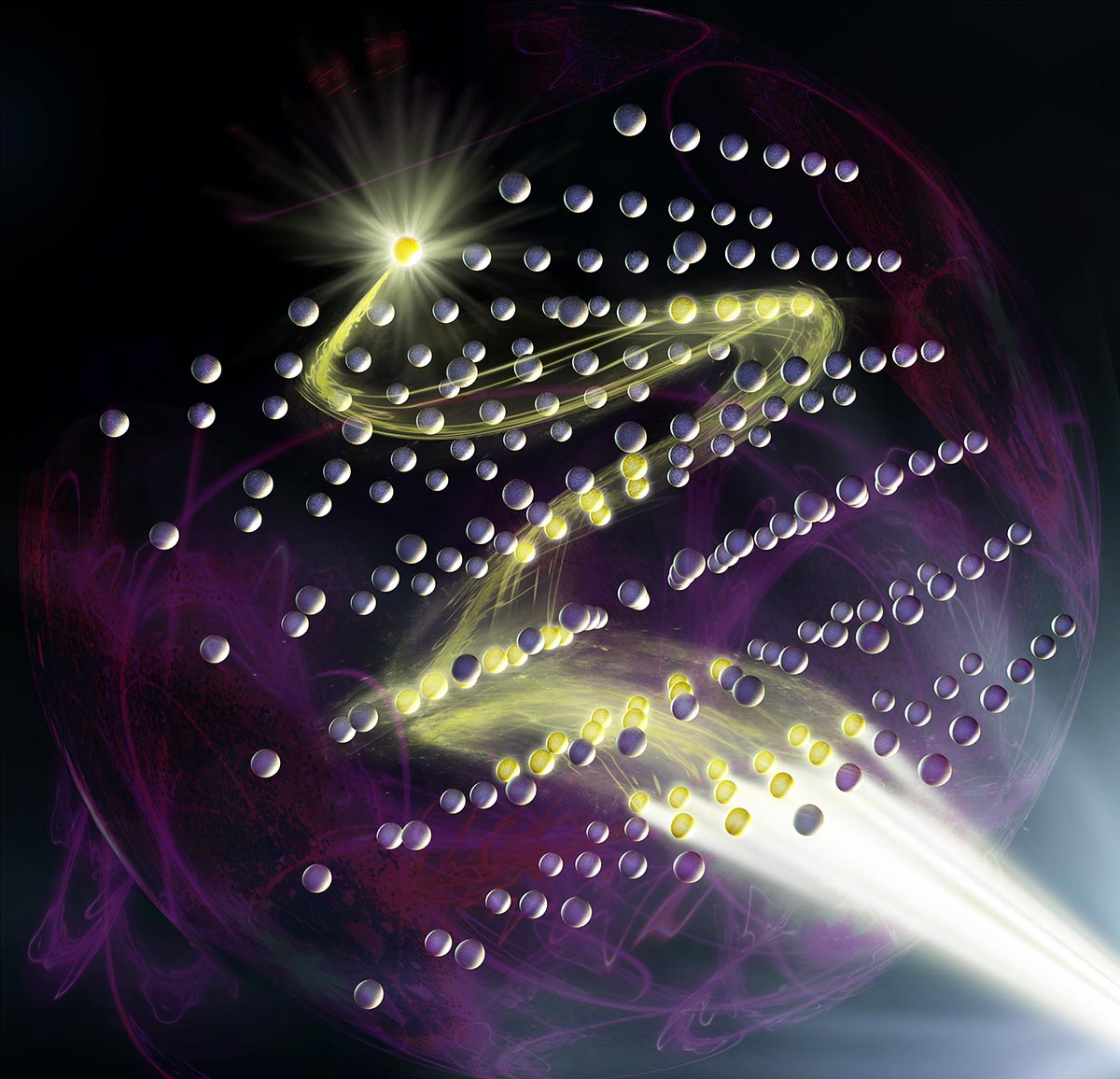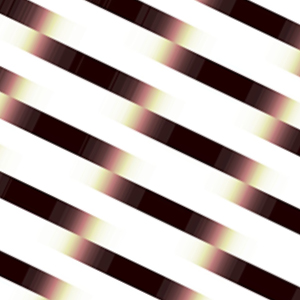Highlights
Atomic arrays can act as lenses for quantum information
 An international team including CQT's Alexander Glaetzle has proposed a new quantum technology to help in transferring information from light to matter. It could find applications in networking and quantum computing.
An international team including CQT's Alexander Glaetzle has proposed a new quantum technology to help in transferring information from light to matter. It could find applications in networking and quantum computing.
An international team including CQT's Alexander Glaetzle has proposed a new quantum technology to help in transferring information from light to matter. It could find applications in networking and quantum computing.
The team's innovation is showing how a cloud of atoms can work as a 'lens', focusing a light-induced excitation from a single photon into one or few atoms in the system. The work was published in Physical Review X in September, accompanied by a synopsis in the magazine Physics. It was also featured in Nature Physics as a Research Highlight.
Today's high internet bandwidth comes from encoding our data in light. Researchers anticipate that quantum networks will use light, too.
Just as we convert today's optical signals into electrical signals readable by modems and computers, so quantum signals may need translating into formats that are easier to process. Light particles are fast communicators but reluctant computers because they do not readily interact with each other.
The challenge is that quantum bits of data are stored in single particles of light, unlike classical bits which can use millions of photons each. Reliably capturing and controlling single-photon signals remains a challenge.
Alexander and colleagues start with a system that's known to be good at collecting photons: arrays of atoms. Unfortunately the system has a drawback. The excitations that result when the photon is absorbed are spread across many atoms. Processing or storing the information in that excitation is much easier if it's confined to a single atom. The team's work counters this problem.
"Ultimately, the goal is to map photonic qubits with high efficiency onto single atoms, such that the well-developed quantum computing toolbox with single and two-qubit gates becomes available" says Alexander.
The trick is to adjust the energy levels of the atoms throughout the system, for example, by illuminating them with light of graduated intensity. That affects the motion of the excitation between the atoms in a way that's analogous to the refractive index of a lens in classical optics affecting light's travel. The analogy continues to behaviour: as a lens focuses light to a point in space, the atoms focus an excitation to a point over time.
The physicists present several variants of their lenses, including multifocal ones, where a single delocalized spin excitation is transformed into a state with entanglement between excitations at spatially separated focal points. They describe how these 'quantum spin lenses' could be implemented in arrays of Rydberg atoms, which are atoms in a highly excited state.
It's all simulations for now, but Alexander, a CQT Research Fellow says "with the experimental setups that exist at the moment, the state-of-the-art, this could be realised".
Alexander hopes that experimentalists working with such systems will test the approach. He has presented the work to groups around the world.
The paper's seven authors have, between them, affiliations at University of Innsbruck and the Institute for Quantum Optics and Quantum Information of the Austrian Academy of Sciences, Austria; the University of Oxford, UK; Harvard University and the Harvard-Smithsonian Center for Astrophysics, US; and the Max-Planck-Institut für Quantenoptik, Germany.
Related Stories
 | Topological scheme for transporting quantum particles inspired by Nobel winner's work November 18 2016 |
 | Result smashes size record for quantum correlations April 25 2016 |






